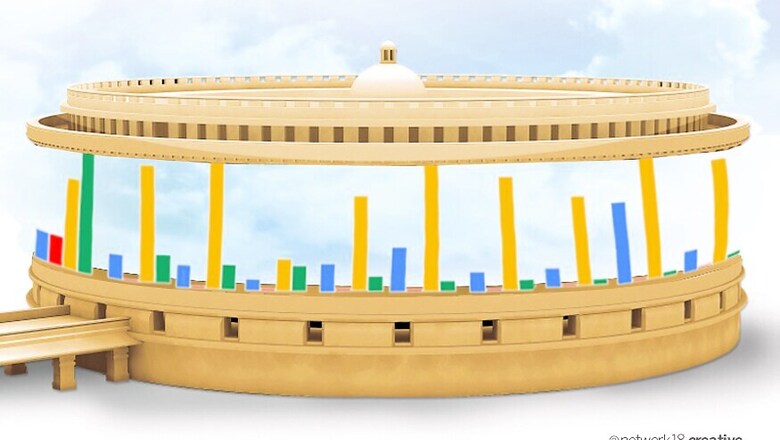
views
First three years are supposed to be the most productive period of any Lok Sabha as after that momentum begins to build for the next general election.
A review of the performance of MPs in the Sixteenth Lok Sabha on four key parameters — attendance, questions asked, debates conducted and private members’ bills presented — shows interesting trends.
For example, seven MPs have 100% attendance, while there are seven others who have less than 20% attendance, according to data provided by PRS Legislative Research.
Bhairon Prasad Mishra of BJP, who represents Banda in Uttar Pradesh, not only has 100% attendance but has also participated in highest number of debates — 1,468 to be precise.
Mishra, a first-time MP, never went to college and, at 62, is far more active than many MPs in their 30s.
“There have been times when I had to rush to Delhi from Lucknow or Kanpur by road, as there was no ticket available in train or flight. My motive is not just to have 100% attendance but also to participate in each debate till the end.”
“Like Parliament, I try to give my best to the constituency. When I am in Banda, I usually walk around,” he added.
Other MPs with 100% attendance are Gopal Chinayya Shetty, Kirit Premjibhai Solanki, Ramesh Chander Kaushik, Kulamani Samal, Niranjan Jyoti and Gurjeet Singh Aujla.
Kirit Premjibhai Solanki, a second-time MP from Ahmedabad West, said excellent connectivity between Ahmedabad and Delhi has helped him. The 66-year-old medical practitioner said, “Since I have been elected by the people, I believe it’s my duty to remain present in Parliament. After all, what can be bigger platform to represent issues of people of my constituency, community, and state?”
On the contrary, Deepak Adhikari, Bengali actor who is an MP from Ghatal (West Midnapore) on Trinamool Congress ticket and better known by his screen name Dev, has only 9% attendance.
Speaking to News18 over the phone, Dev said, “I am in the US will get back to you soon.”
When asked for the reason behind being the least active MP in Lok Sabha, the actor who has been awarded ‘Mahanayak Samman’ by West Bengal government said, “It is happening because of my hectic schedule.”
Gopal Chinayya Shetty, the 63-year old MP from Mumbai-North, has risen from municipal councillor to become an MP and can’t even imagine missing a single session. “In my 25 years of political career, I have taken only two leaves. My father was a Class 4 employee and I have come from the humble background. Very few people get to rise from a municipal councillor level to become an MP. It is a big responsibility,” he said.
Muzaffar Hussain Baig, who represents J&K’s Baramulla, Rama Chandra Hansdah, Biju Janata Dal MP from Mayurbhanj in Odisha, and S.P.Y. Reddy, from Nandyal in Andhra Pradesh, are other MPs with the lowest attendance.
How Do States Fare
In another surprise, MPs from Manipur, Mizoram and Himachal Pradesh have above 90% average attendance, similar to Delhi. This shows that distance or connectivity are not the only factors driving participation of MPs. Uttarakhand, Rajasthan, Uttar Pradesh and Bihar are other states with high average attendance of MPs.
MPs from Jammu and Kashmir have the worst average attendance at 52%, followed by Nagaland, West Bengal, Punjab and Telangana.
On an average, MPs from Maharashtra, Sikkim and Kerala ask most questions while those from Mizoram, Nagaland and Jammu & Kashmir ask the least number of questions.
Similarly, MPs from Tripura, Kerala and Rajasthan participate in most debates. Their counterparts from Mizoram, Meghalaya, Nagaland and Goa seem to refrain from debates.
MPs from Delhi, Arunachal Pradesh, Uttarakhand and Jharkhand have moved the highest number of private members’ bills, while MPs from 14 states and Union Territories have not produced a single such bill.
Parties in Lok Sabha
An analysis of 17 parties, which have at least 4 MPs in Parliament, shows that Bharatiya Janata Party MPs have highest attendance, followed by Lok Jan Shakti Party, Biju Janata Dal and Communist Party of India (M).
Among those with lowest average attendance are Aam Aadmi Party, All India Trinamool Congress, Yuvajana Sramika Rythu Congress and Telangana Rashtra Samithi.
While CPI (M) and Rashtriya Janata Dal participate in most debates, LJSP and AITC join least number of debates.
Parties from Maharashtra – Shiv Sena and Nationalist Congress Party – ask most questions. This makes NCP’s Supriya Sule, Dhananjay Bhimrao Mahadik and Shiv Sena’s Shrirang Appa Barne top quizzers.
Unlike popular perception, AAP and AITC are the ones that rarely ask questions in Lok Sabha.
Age, on these four parameters, doesn’t matter much as some MPs in their 70s are more active than those in their 30s. On an average, when we divided the data as per 10-year age bracket, an interesting fact came across — all age groups are equally active with 70-80% attendance range.
Sixteenth Lok Sabha is heavily male dominated with just about 10% women MPs. On the four performance indicators used for this analysis, women MPs perform equally well as their male counterparts, revealing that the biggest roadblock in gender balance in the legislature in the bias in ticket distribution among political parties.
On all four parameters, Congress MPs fail to score big. Numbers, as they say, don’t lie.
(Primary data source: PRS Legislative Research)










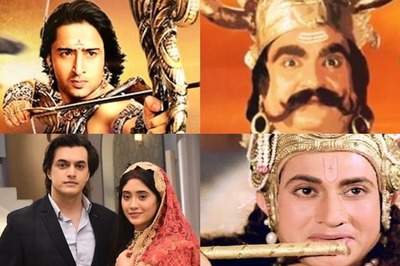






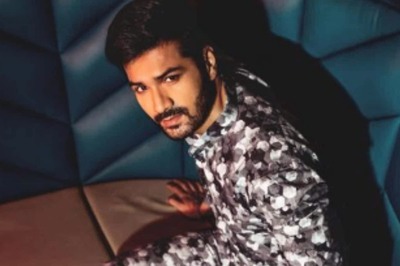
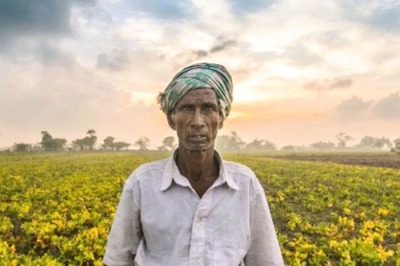
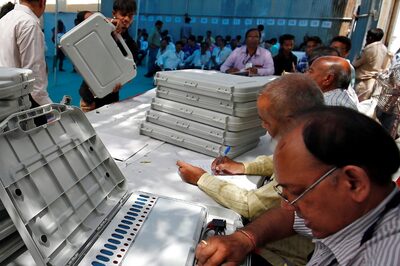
Comments
0 comment